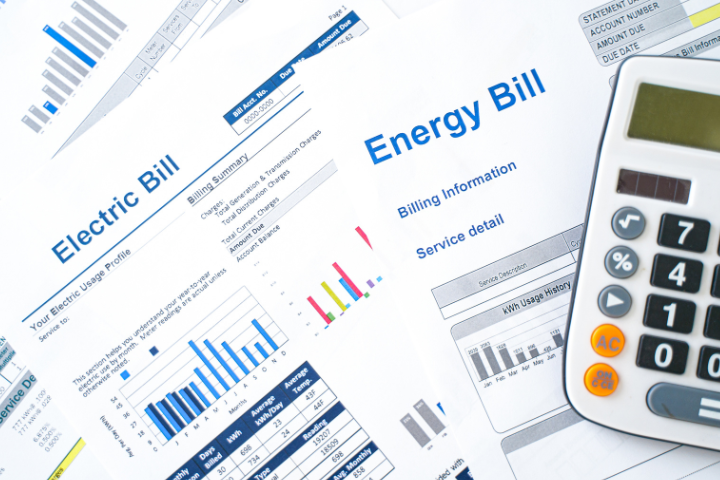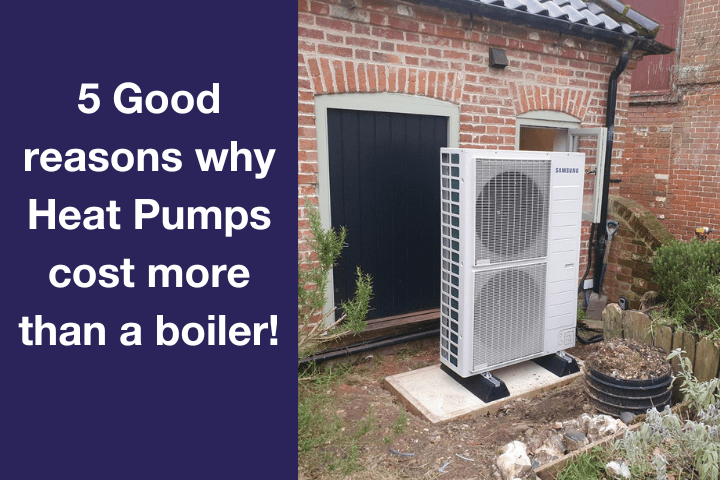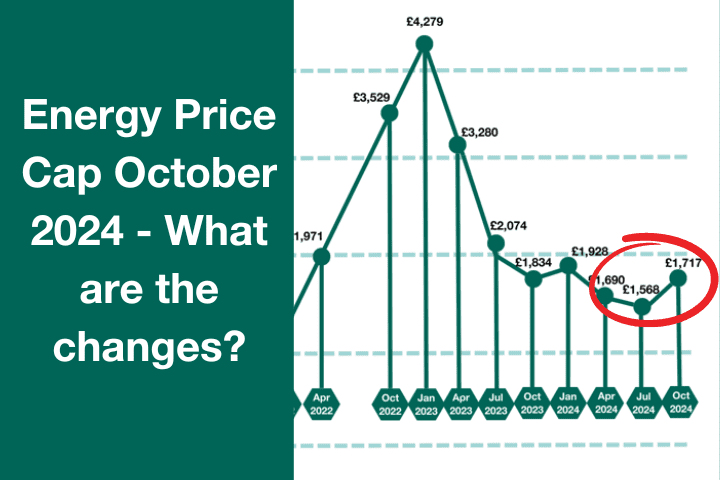7 ways to stop being an Energy Price Captive!

Do you remember a time when, every three months, we didn’t have to care about Ofgem’s Energy Price Cap? When we didn’t have to think about what the Energy Price Cap meant? And what the Energy Price Cap meant to us?
Do you remember? Remember, when the only stress we had ever experienced about energy in our lives was when our Mum or our Dad (no matter our age) had told us off for leaving the lights on in the rooms that we weren’t in – “It’s like Blackpool illuminations in here!”
Now, however, it seems that every three months, the media works itself, and us, into a frenzy about what Ofgem’s Energy Price Cap will be and how our household bills will be affected by it.
Martin Lewis gets wheeled out on This Morning with whichever hosts are currently talking to one another, and he explains what it all means to us. Indeed, there are many useful websites like the Money Saving Expert’s where you can find information about what the more recent announcement signifies for you and your energy bills. We even produced our own little video on what it all means too.
Table of Contents
But if you want a really quick (and slightly blunt) summary, here it is:
- The energy price cap has been reduced. But most consumers won’t feel much benefit from it.
- BECAUSE most of us will still be paying more for our energy than we did during winter. This is because the rate drop doesn’t make up for the £66 per month support people got until April from the government.
- AND DON’T FORGET energy prices are double what they were two years ago.
- AND the overall general trend for energy prices is still upwards!
We’re not here to bemoan the energy price cap. Far from it. The energy price cap in the UK plays a crucial role in protecting customers, promoting fair competition, and improving affordability in the energy market. 7
This week’s announcement does mean that once again, as the current Energy Price Guarantee (EPG) level disappears, most people’s bills will again be controlled by the Energy Price Cap. So, it is worth caring about what it is!
HOWEVER, what we believe is that there is a positive alternative to being energy ‘cap’tives and having to care so much about the Energy Price Cap. We believe that renewable technologies like solar PV panel systems and battery storage provide people with the opportunity to take back control of their energy needs and not have to rely so intently on the volatile energy price market, which is still dominated by what the fossil fuel markets are doing and global events out of our control.
Energy Price Cap: 5 ways solar can give you back power

Feel free with energy independence:
By installing a solar and battery system, you can generate your own electricity from the sun. This reduces your dependence on the grid and the energy market, shielding you from potential energy price rises.
As energy prices fluctuate in the future, you can rely on your self-generated power, which remains unaffected by market conditions. Many of our customers feedback on how good it is not to have to listen to all the news on energy, knowing that they are generating free energy from the sun.
Fixed Energy Costs (and get paid for your excess):
Solar power allows you to lock in some energy costs at a fixed rate. Once the system is installed, the cost of generating electricity from the sun remains relatively stable, regardless of external factors such as fossil fuel prices or grid fluctuations. This stability protects you from unpredictable energy price rises, providing long-term financial security. You can even earn money for any excess electricity you generate and feed it back into the grid.
Protection Against Grid Price Increases:
Grid electricity prices are subject to various factors, including fuel costs, infrastructure investments, and regulatory changes. These factors can contribute to rising energy prices over time. By incorporating a battery storage system into your solar installation, you can store excess energy during times of low demand and use it when prices are higher. This allows you to rely less on grid electricity, thereby shielding yourself from potential price increases.
Peak Time Management (wash when you want!):
Traditional Energy providers often charge higher rates during peak demand periods, such as evenings when households consume more electricity. With a solar and battery system, you can use your stored energy during these peak times, reducing or eliminating the need to draw power from the grid when rates are highest.
This strategy helps you avoid peak-time pricing and prevents associated cost escalations. It also means those middle-of-the-night washing loads could be a thing of the past.
Energy Security and Resilience:
Solar and battery installations provide increased energy security during power outages or disruptions. A battery system can store excess energy generated during the day and use it when the grid is down, ensuring a continuous power supply. This reduces your vulnerability to energy supply disruptions and potential price surges during such events.
Get energy ‘appy:
Many customers report how much they love using their solar battery storage app. They can control and see in real-time how much electricity the panels are producing and what they have stored, and they feel in control of their energy use.
We call this being energy ‘appy at Green Building Renewables! Many of us already have smart monitors in our homes for electricity. But they can feel like a snitch in the corner of the room, just reminding you how much energy you use. They sit there counting the pounds and pennies, making you feel guilty for that well-earned sixth cuppa of the day! But having the app for your solar is the opposite feeling. You get to see how much money you save by being environmentally responsible; it’s a good feeling.
Feeling smug for doing good:
Joking! Not joking. We know from our customers that they feel satisfied installing solar PV and battery storage. And we know no one likes someone being smug from doing the right thing. But equally, if you do, you shouldn’t feel bad about it. There is something emotionally rewarding about investing in your home, family and the environment. And hey, we won’t hate you for feeling slightly smug about it. You have done something good!
So, by combining solar power with battery storage, you can establish a resilient and self-sufficient energy system that protects you and your home from future energy price rises. The ability to generate, store, and utilise your own clean energy reduces dependence on the grid, minimizes exposure to fluctuating energy costs, and provides long-term financial stability and peace of mind. We can’t predict the future at Green Building Renewables, but if we were, the longer people rely on fossil fuel energy for their home, the longer they will feel like an energy ‘cap’tive.
Understanding the Energy Price Cap can be tricky, so here’s more information on what it means and how Ofgem works.
What is the Energy Price Cap? And why is important to care about it?
Our energy bills represent a significant portion of our monthly expenses for many of us. As energy costs continue to rise, as they have, we are often left searching for ways to manage our budgets effectively. The introduction of the energy price cap in the United Kingdom was a significant development to help protect consumers from excessive energy costs. But as we have all learnt in the last year, many factors, out of our control, out of the government’s control, can impact the price of energy in the UK.
What is the aim of the Energy Price Cap?
- To protect against unfair pricing: The Energy Price Cap safeguards against unfair pricing practices by energy suppliers. It limits the maximum price that can be charged for standard variable and default energy tariffs. The idea was to ensure that customers are not subjected to sudden and unjustified price hikes, providing stability and predictability in energy costs.
- Improved affordability: One of the primary reasons you should care about the Energy Price Cap is its potential to improve affordability. The cap aims to prevent suppliers from charging excessively high rates, particularly for customers on standard variable or default tariffs. This ensures that energy bills remain more manageable for households with limited budgets or vulnerable consumers. The price cap is supposed to act as a safety net, offering financial relief and reducing the risk of energy bills becoming unaffordable. But as we saw in the last year- this has not been the case.
- Encouraging fair competition: The introduction of the Energy Price Cap was supposed to stimulate fair competition within the energy market. By limiting the maximum prices that can be charged, the cap incentivises suppliers to offer more competitive and attractive tariffs to customers.
- Transparency and consumer empowerment: The Energy Price Cap is supposed to promote transparency and consumer empowerment. It ensures that energy suppliers are accountable for their prices and discourages hidden fees or unfair practices.
- Long-term savings: In theory caring about the Energy Price Cap should lead to long-term savings for you, the customer. While the price cap limits suppliers’ maximum price, it does not restrict customers from finding more competitive deals. By actively engaging with the market, comparing tariffs, and switching to better value plans, customers can potentially secure significant savings on their energy bills over time.
In theory, the Energy Price Cap is there to protect consumers, but the truth is that the Energy Price Cap, particularly Ofgem, has its limitations. And with our rising concerns about the environment and our bills, tracking energy prices has, in the last year, become a widespread practice for many people. However, relying solely on what Ofgem says may not be your most effective strategy. Here are a few things that limit Ofgem and, therefore, the price cap.
- Limited scope of information: While Ofgem provides valuable insights into the energy market, it is important to note that their data is not exhaustive. Ofgem primarily focuses on the average tariffs the Big Six energy suppliers offer. By relying solely on Ofgem, you risk missing out on better deals and potentially paying more for your energy consumption.
- Limited focus on green energy options: Recently, there has been a significant shift towards renewable energy sources as consumers prioritise environmentally friendly alternatives. While Ofgem does provide information on green energy tariffs, its emphasis is still largely centred on conventional energy suppliers. Expanding your search beyond Ofgem, you can discover a broader range of green energy providers that may offer more competitive prices, ensuring both affordability and sustainability.
- Diverse consumer needs: We’re not all the same. Our energy consumption patterns vary greatly among households, making it crucial to tailor your energy tariffs or energy source to your specific requirements. Exploring other platforms, energy comparison websites, or consulting with independent energy advisors can provide a broader array of options better suited to your unique circumstances.
So, while Ofgem remains an important source of information regarding energy prices in the UK, consumers should be aware of its limitations. Relying solely on Ofgem may lead to missed opportunities for securing better deals, accessing green energy options, and tailoring tariffs to your individual needs.
If you want to find out more about how we can help, get in touch today.




